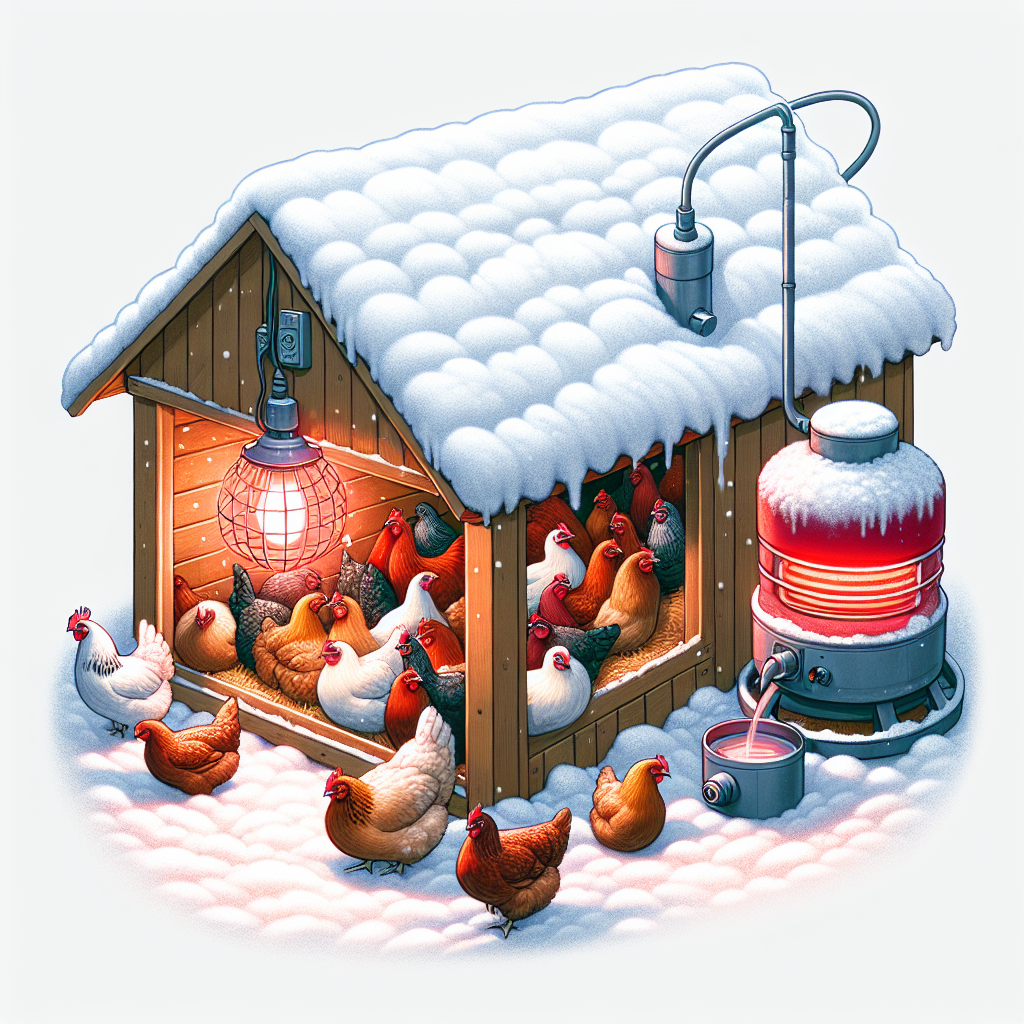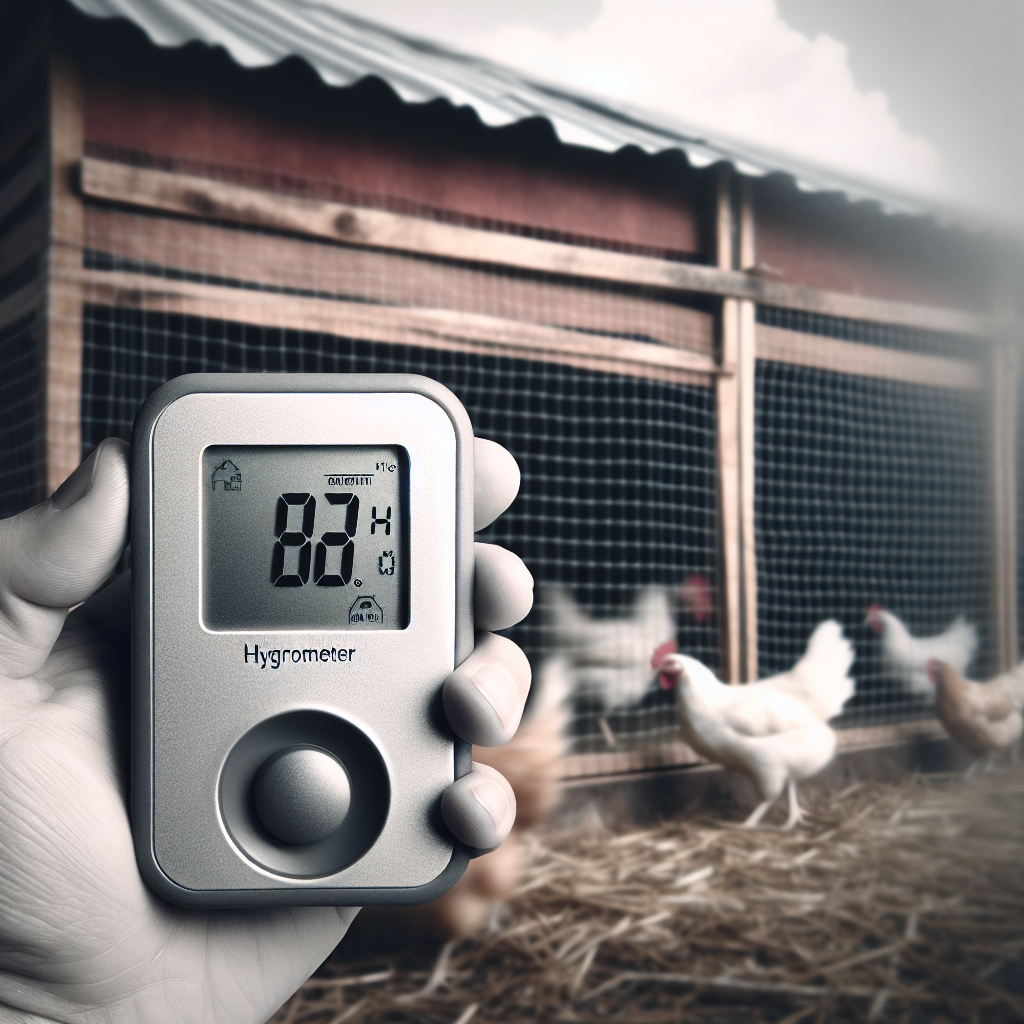During freezing conditions, you might wonder if your chickens need extra bedding or warmth sources to stay comfortable and healthy. In this article, we will explore the topic and provide you with some useful insights. Whether you are a seasoned chicken owner or new to raising these feathered friends, understanding their needs during cold weather is essential. So, let’s dive in and discover what steps you can take to ensure your flock stays cozy when the temperatures drop.
Chickens in Freezing Conditions
The effects of cold temperatures on chickens
When temperatures drop below freezing, chickens can be highly susceptible to various negative effects. Cold temperatures can cause chickens to experience discomfort, stress, and even serious health issues. Chickens are naturally equipped to handle cooler temperatures, but extreme cold can still take a toll on their well-being.
Understanding a chicken’s natural resistance to cold
Chickens have a natural resistance to cold temperatures to some extent. They have feathers that act as insulation and help retain body heat. Chickens also have the ability to adjust their metabolism and conserve energy during cold weather. However, these natural defenses are not always sufficient to protect chickens from the harshness of freezing temperatures.
The importance of providing appropriate shelter
To ensure the well-being of chickens in freezing conditions, it is crucial to provide them with appropriate shelter. A well-constructed and insulated coop can help protect chickens from the chilling effects of cold weather. Shelter not only provides a barrier against the cold air but also aids in keeping the coop bedding dry, which is essential for maintaining warmth.
Bedding for Chickens
The role of bedding in chicken coops
Bedding plays a vital role in the chicken coop, especially during freezing conditions. It serves multiple purposes, including providing insulation against the cold ground and trapping heat generated by the chickens. Bedding also absorbs moisture and helps keep the coop clean and odor-free.
Types of bedding material for chickens
There are various bedding materials available for chickens, each with its own advantages and disadvantages. Common options include straw, wood shavings, hay, and shredded paper. While straw may seem like the go-to choice for warmth, it is not necessarily the best option. Wood shavings are popular due to their excellent insulation properties, while hay and shredded paper can also provide sufficient warmth.
Benefits of providing ample bedding in freezing conditions
During freezing conditions, providing ample bedding is essential for the well-being of chickens. The bedding acts as an additional layer of insulation, helping to retain body heat. It also provides a soft and comfortable surface for chickens to rest on, reducing the risk of developing conditions like frostbite. Additionally, the bedding absorbs moisture and helps maintain the hygiene of the coop.
Insulating the Chicken Coop
Insulation options for chicken coops
Insulating the chicken coop is a crucial step in protecting chickens from freezing conditions. There are several insulation options available, such as insulating boards, reflective insulation, and insulation foams. These materials help create a barrier that prevents cold air from entering the coop while also retaining the warmth generated by the chickens.
Factors to consider when insulating
When insulating the chicken coop, it’s important to consider factors such as the climate in your area, the size of the coop, and the number of chickens. Insulation should be properly installed on the walls, roof, and flooring of the coop to ensure maximum effectiveness. It is also essential to ensure proper ventilation to avoid moisture buildup, which can lead to health issues for the chickens.
The benefits of a well-insulated coop
A well-insulated coop offers numerous benefits to chickens during freezing conditions. It helps maintain a stable and comfortable temperature inside the coop, protecting chickens from extreme cold. The insulation also aids in reducing the energy consumption needed for heating, which can be beneficial both for the environment and for your wallet. Additionally, a well-insulated coop can help prevent drafts and maintain overall coop hygiene.
Heating Options for Chickens
When and why chickens may need additional heat
While chickens have natural mechanisms to withstand cold temperatures, there are instances where they may require additional heat. Young chicks, older or weaker chickens, and certain breeds that are more susceptible to cold may need supplemental heat to maintain their body temperature. Additionally, extremely low temperatures can make it challenging for chickens to generate enough body heat on their own.
Different types of heating sources for chickens
When providing additional heat to chickens, there are various heating sources to consider. Heat lamps, radiant heaters, and heated perches are popular options. Heat lamps emit intense heat and can be hung in the coop to provide warmth. Radiant heaters are more energy-efficient and distribute heat evenly. Heated perches, on the other hand, provide warmth directly to the chickens while they roost.
Safety precautions with heating methods
Safety should be of utmost importance when using heating methods in the chicken coop. It is crucial to ensure that heating equipment is installed properly and securely to avoid any fire hazards. Using thermostats and timers can help regulate the temperature and avoid overheating. Regularly inspecting the heating equipment and keeping flammable materials away from the heat source are also important safety measures.
Signs of Cold Stress in Chickens
Signs to watch for in cold-affected chickens
It’s important to monitor chickens for signs of cold stress during freezing conditions. Some common signs include shivering, pale combs, lethargy, decreased egg production, and reduced appetite. Cold-stressed chickens may huddle together to conserve body heat or exhibit abnormal behavior like pecking at each other. It’s crucial to act promptly if any of these signs are observed to prevent further health complications.
How to prevent and treat cold stress in chickens
Preventing cold stress in chickens starts with providing adequate shelter, bedding, and insulation. Ensuring a well-ventilated yet draft-free coop is crucial. Additionally, offering supplementary heat when necessary can help prevent cold stress. If chickens do exhibit signs of cold stress, it is important to move them to a warmer location, provide warmth, and offer warm water to encourage hydration.
The role of proper bedding and insulation in preventing cold stress
Proper bedding and insulation play a significant role in preventing cold stress in chickens. Sufficient bedding helps trap heat and maintain a warmer environment, reducing the risk of cold stress. Well-insulated coops prevent drafts, retain heat, and create a comfortable space for chickens. Together, these measures provide a protective shield against freezing conditions and help keep chickens healthy.
Best Practices for Keeping Chickens Warm
Maintaining an appropriate coop temperature
Maintaining an appropriate coop temperature is crucial for keeping chickens warm and healthy. The ideal temperature for adult chickens in freezing conditions is around 32 to 40 degrees Fahrenheit (-2 to 4 degrees Celsius). Checking the temperature regularly with a thermometer and adjusting heating methods or insulation as needed can help maintain a suitable environment for the chickens.
Creating a warm microclimate in the coop
Creating a warm microclimate within the coop can enhance the comfort level for chickens during freezing conditions. This can be achieved by using materials like straw or hay as bedding, which provide additional insulation. Placing heat sources strategically in areas where chickens spend the most time, such as near roosting poles, can also help create localized warmth.
Alternative methods for keeping chickens warm
In addition to traditional heating methods, there are alternative ways to keep chickens warm during freezing conditions. Some chicken owners opt for solar-powered heating systems, which utilize renewable energy sources and reduce electricity consumption. Deep litter systems, where the bedding is allowed to accumulate and decompose, can generate heat naturally and provide warmth to the chickens.
Common Mistakes and Misconceptions
Myth: Chickens don’t need any additional warmth
One common myth is that chickens do not need any additional warmth during freezing conditions. While chickens are more resistant to cold compared to other animals, extreme temperatures can still have adverse effects. Providing supplementary heat and ensuring appropriate bedding and insulation are essential for their well-being.
Mistake: Overheating the coop is better than underheating
Some chicken owners mistakenly believe that overheating the coop is better than underheating it. However, excessive heat can be just as harmful as extreme cold. Overheating can lead to dehydration and respiratory issues for the chickens. It is crucial to maintain a suitable temperature and regularly monitor the coop to avoid overheating.
Misconception: Straw is the best bedding material for warmth
Although straw is often associated with warmth, it is not necessarily the best bedding material for chickens during freezing conditions. Straw lacks the necessary insulation properties and can become moist easily, leading to chilled chickens. Choosing bedding materials like wood shavings or hay that provide better insulation is more beneficial for maintaining warmth.
Adjusting Bedding and Heating Based on Chicken Behavior
Monitoring chicken behavior for assessing warmth needs
Observing chicken behavior is key in determining their warmth needs. If chickens are huddling together, shivering, or showing signs of discomfort, it may indicate that they need additional warmth. Conversely, if chickens are avoiding heat sources or panting excessively, it could be a sign of overheating. Adjusting bedding and heating accordingly based on these observations ensures the chickens’ comfort.
Making adjustments to bedding and heating accordingly
Regularly assessing and making adjustments to bedding and heating methods is important to maintain an optimal environment for the chickens. Adding an extra layer of bedding during colder periods can enhance insulation. Similarly, adjusting the heat source’s intensity or positioning it differently can help create the ideal temperature within the coop.
Considering the unique needs of different chicken breeds
Different chicken breeds have varying levels of resistance to cold temperatures. Breeds like the Rhode Island Red and Ameraucana tend to be hardier and better equipped to handle colder conditions. On the other hand, breeds such as Silkies and Polish chickens may require extra warmth due to their smaller body size and less insulating feathers. Considering the specific needs of different chicken breeds ensures their well-being.
Preparing for Freezing Conditions
Winterizing the chicken coop
Winterizing the chicken coop is a crucial step in preparing for freezing conditions. Inspecting the structure for any cracks or gaps and sealing them helps prevent drafts. Clearing any debris or vegetation around the coop can also minimize cold air infiltration. Additionally, providing extra insulation or heat sources as necessary ensures that the coop is ready to withstand the harsh temperatures of winter.
Stocking up on bedding and heating supplies
Before freezing conditions arrive, it is important to stock up on bedding and heating supplies. Having ample bedding materials on hand allows for regular bedding changes and maintenance of a warm and dry environment. Likewise, ensuring that any heating equipment, such as heat lamps or radiant heaters, is fully functional and stocked with spare bulbs or heating elements is essential for uninterrupted warmth.
Implementing a cold weather management plan
Having a cold weather management plan in place is crucial to ensure the well-being of chickens during freezing conditions. This plan should include regular coop inspections, adjusting bedding and heating as needed, monitoring chicken behavior closely, and having contingency measures in case of power outages or extreme weather events. By following a well-prepared management plan, you can effectively protect your chickens from the challenges of winter.
Conclusion
When facing freezing conditions, it’s vital to prioritize the well-being of your chickens. By understanding the effects of cold temperatures, providing appropriate shelter, ample bedding, and insulation, and implementing necessary heating methods, you can keep your chickens warm and healthy. Regular monitoring of chicken behavior, adjusting bedding and heating accordingly, and considering the unique needs of different breeds will further optimize their comfort. By taking these measures and preparing in advance, you can ensure that your chickens thrive even in the coldest of weather.




